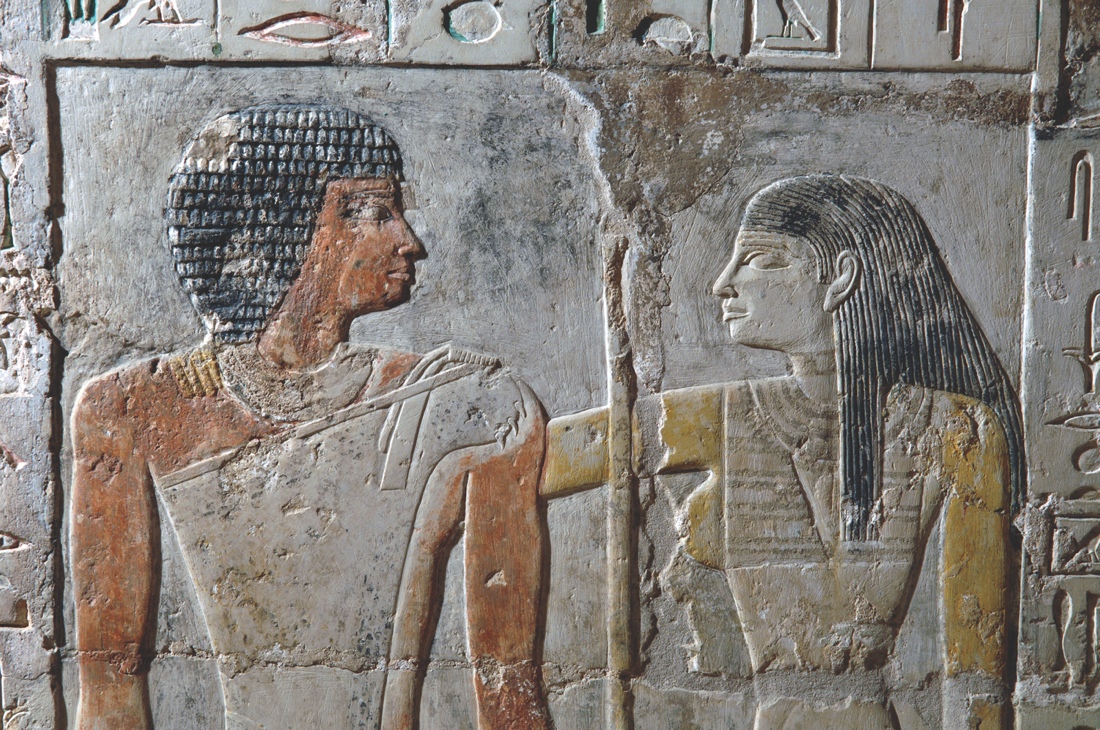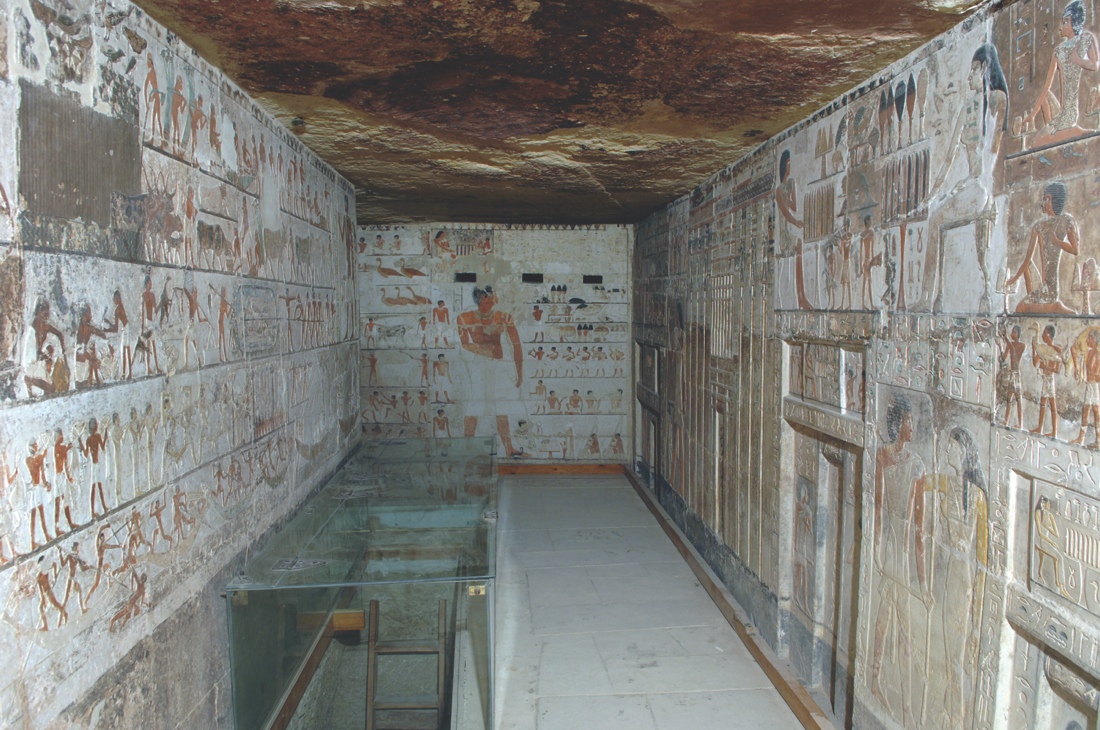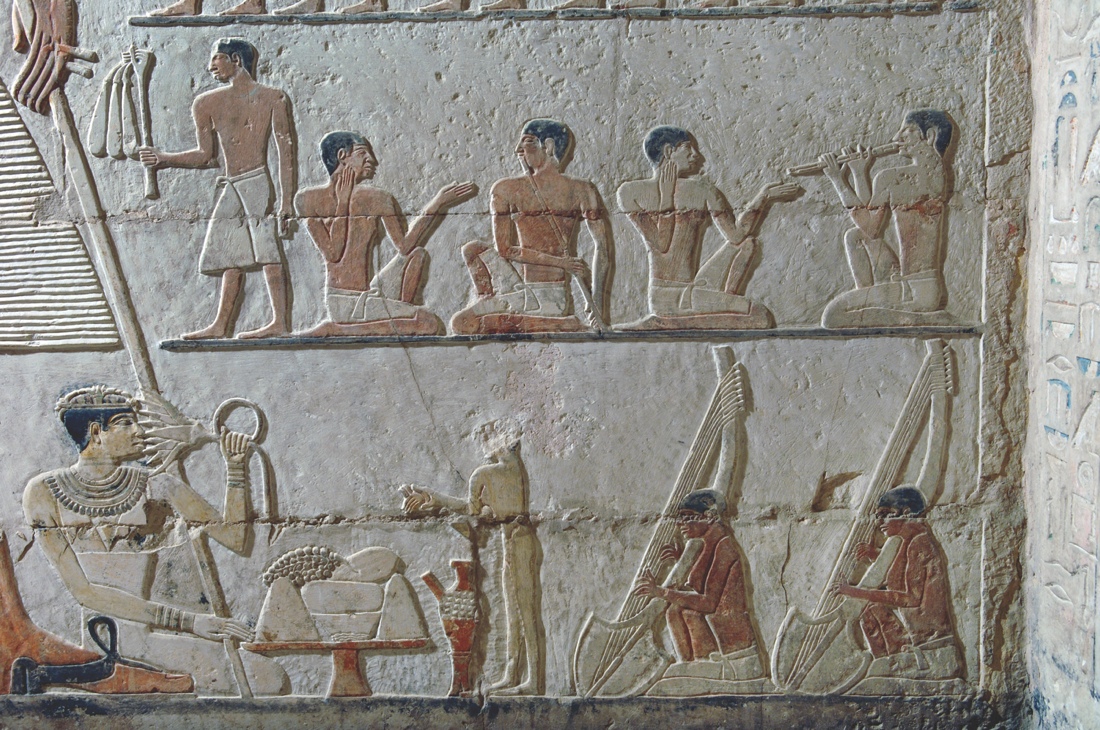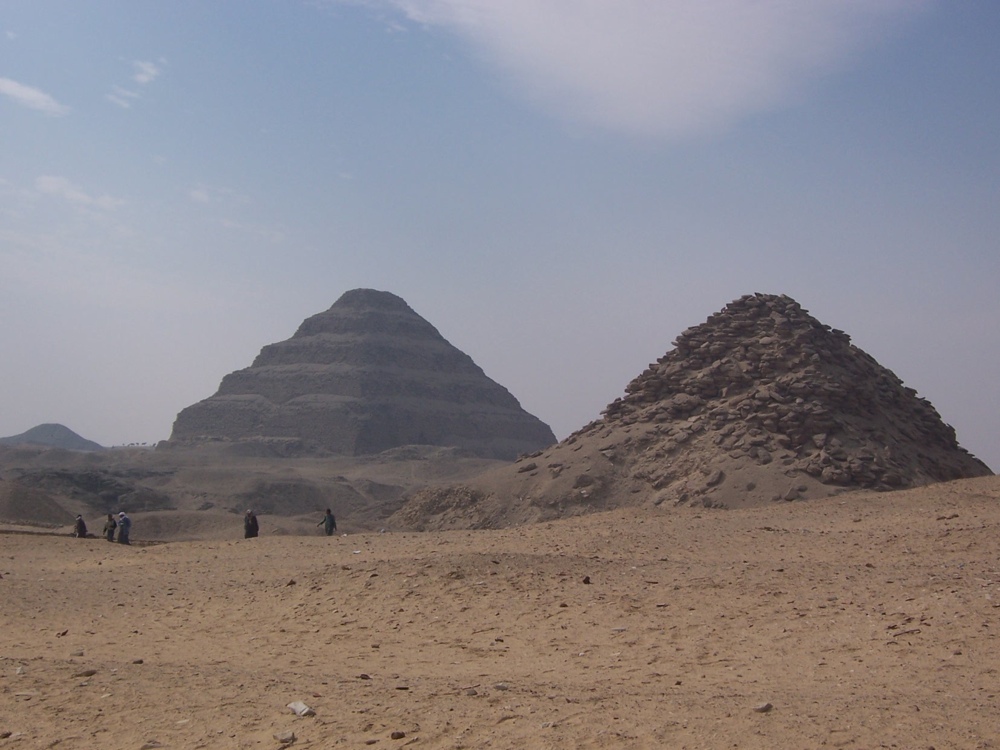Photos: Egyptian tomb dating to age of the pyramids
Colorful Embrace
A tomb dating back around 4,400 years, to the age when pyramids were built in Egypt, has been recorded in full color. One of the most remarkable images the researchers published is this embrace between the priestess Meretites (at right) and her husband Kahai (at left), a singer in the pharaoh's palace. The tomb was built for them and their children. Very few examples of this face-to-face embrace survive from Egypt's Pyramid Age, and researchers say that it signifies a very special closeness between the two.
Egyptian tomb
A general view of the tomb looking south is shown here. While it is not a particularly large structure much of the original artwork has survived with its color intact, giving researchers a glimpse into the life of a family from the Age of the Pyramids. Researchers note that women were depicted prominently in this tomb, often on an equal basis with the men. This suggests there was more equality between the sexes during the Pyramid Age than some scholars believed.
Vivid Burial
Researchers say the tomb's artwork is some of the most colorful that has survived from the Pyramid Age. The man depicted several times in this scene is Nefer, a son of Kahai. Like Kahai he was also a singer but, tragically, died before his father, leaving three young sons and apparently a pregnant wife behind.
At lower left is a "false door" where food offerings could be made to his "Ka," the life force of the deceased. His three sons are shown naked (the custom at the time) at bottom left alongside Nefer.
Singers & Flutists
In this image two singers with their hands extended are shown singing beside two musicians playing flutes. Below two harp players can also be seen playing. At far left is a woman holding a lotus flower who is probably the wife of Nefer, a son of Kahai who died before his father. To her left (mostly unseen in this image) is a giant image of Nefer holding a staff that towers over everyone.
Age of the Pyramids
The tomb was built during the Old Kingdom (2649-2150 B.C.), a time when pyramid building thrived in Egypt, leading some scholars to call this Egypt's Age of the Pyramids. The tomb of Kahai was constructed several decades after the last of the Giza Pyramids was complete.
Step Pyramid
The tomb itself is located at Saqqara, a vast burial ground with several pyramids, which was located near the ancient capital of Memphis. The Step Pyramid seen in this image was a predecessor to the true pyramids that would be built later in the Pyramid Age.
Double Statue
Researchers have determined the tomb of Kahai and his family was constructed during or shortly after the reign of King Niuserre (2420-2389 B.C.) who built his own pyramid just to the southeast of Giza at the site of Abusir. Kahai was a singer in the pharaoh's palace and he likely sang for members of Niuserre's family and perhaps for the pharaoh himself. This image shows a "double statue" of Niuserre (the king depicted twice), which is now in a museum in Munich.
Get the world’s most fascinating discoveries delivered straight to your inbox.
Originally published on Live Science.

Owen Jarus is a regular contributor to Live Science who writes about archaeology and humans' past. He has also written for The Independent (UK), The Canadian Press (CP) and The Associated Press (AP), among others. Owen has a bachelor of arts degree from the University of Toronto and a journalism degree from Ryerson University.
 Live Science Plus
Live Science Plus












